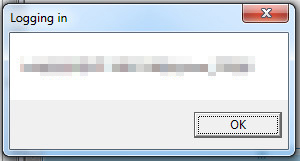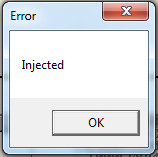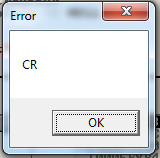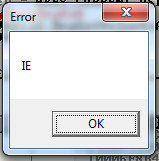BKDR_NUCBOT.AGV
Win32.Trojan-banker.Nuclear.Egel (Tencent), TrojanSpy:Win32/Banker (Microsoft), Trojan-Banker.Win32.Nuclear.a (Kaspersky)
Windows


Threat Type: Backdoor
Destructiveness: No
Encrypted: No
In the wild: Yes
OVERVIEW
Downloaded from the Internet, Dropped by other malware
This backdoor arrives on a system as a file dropped by other malware or as a file downloaded unknowingly by users when visiting malicious sites.
TECHNICAL DETAILS
4,259,840 bytes
DLL
Yes
21 Dec 2016
Connects to URLs/IPs, Compromises system security, Steals information
Arrival Details
This backdoor arrives on a system as a file dropped by other malware or as a file downloaded unknowingly by users when visiting malicious sites.
Installation
This backdoor drops the following files:
- %Application Data%\{random name 2}.txt - contains stolen information
(Note: %Application Data% is the Application Data folder, where it usually is C:\Documents and Settings\{user name}\Application Data on Windows 2000, Windows Server 2003, and Windows XP (32- and 64-bit); C:\Users\{user name}\AppData\Roaming on Windows Vista (32- and 64-bit), Windows 7 (32- and 64-bit), Windows 8 (32- and 64-bit), Windows 8.1 (32- and 64-bit), Windows Server 2008, and Windows Server 2012.)
It drops and executes the following files:
- {malware path}\{random name 3}.bat - deletes malware itself
It drops the following copies of itself into the affected system:
- %Application Data%\{random name 1}\{random name 1}.exe
(Note: %Application Data% is the Application Data folder, where it usually is C:\Documents and Settings\{user name}\Application Data on Windows 2000, Windows Server 2003, and Windows XP (32- and 64-bit); C:\Users\{user name}\AppData\Roaming on Windows Vista (32- and 64-bit), Windows 7 (32- and 64-bit), Windows 8 (32- and 64-bit), Windows 8.1 (32- and 64-bit), Windows Server 2008, and Windows Server 2012.)
It adds the following processes:
- svchost.exe
It creates the following folders:
- %Application Data%\{random name 1}
(Note: %Application Data% is the Application Data folder, where it usually is C:\Documents and Settings\{user name}\Application Data on Windows 2000, Windows Server 2003, and Windows XP (32- and 64-bit); C:\Users\{user name}\AppData\Roaming on Windows Vista (32- and 64-bit), Windows 7 (32- and 64-bit), Windows 8 (32- and 64-bit), Windows 8.1 (32- and 64-bit), Windows Server 2008, and Windows Server 2012.)
It injects codes into the following process(es):
- created svchost.exe
- iexplore.exe
- firefox.exe
- mozilla.exe
- IEXPLORE.exe
- chrome.exe
- explorer.exe
- opera.exe
Autostart Technique
This backdoor creates the following registry entries to enable automatic execution of dropped component at every system startup:
HKEY_CURRENT_USER\Software\Microsoft\
Windows\CurrentVersion\Run
{random name 2} = %Application Data%\{random name 1}\{random name 1}.exe
Backdoor Routine
This backdoor connects to the following URL(s) to send and receive commands from a remote malicious user:
- {BLOCKED}.{BLOCKED}.197.19/PanelDark/client.php
Information Theft
This backdoor gathers the following data:
- Administrator privileges
- User name
- Computer Name
- Processor Handle Information (32 bit or 64 bit)
NOTES:
This backdoor checks for these running processes:
- Apispy.exe
- Autoruns.exe
- Autorunsc.exe
- Dumpcap.exe
- Fortitracer.exe
- Hookexplore.exe
- Idag.exe
- Idaq.exe
- Importrec.exe
- Multi.pot.exe
- Ollydbg.exe
- Peid.exe
- Procmon.exe
- Regmon.exe
- Sysanalyzer.exe
- Vmsrvc.exe
- Vmtoolsd.exe
- Vmusrvc.exe
- Vmwaretray.exe
- Vboxtray.exe
- Vboxservice.exe
It also checks for the following strings in processes:
- a2hooks32
- adialhk
- anvirhook56
- api_log
- avgrsstx
- avcuf32
- Bg
- Agent
- cssdll32
- desktopmessaging
- dir_watch
- eeconsumer
- guar
- d32
- icadapter
- icmanagement
- ieprot
- kakatool
- kmon
- legacycon
- sumers
- mzvkbd
- pavshook
- PCTGMhk
- persistance
- QOEHook
- R3HOOK
- rapport
- rooksbas
- sar4
- savneutralres
- savreseng
- sbie
- sbied
- ll
- snxhk
- sophos_detoured
- swi_filter
- UMEngx86
- vmcheck
- vmhg
- fs
- wbsys
- wl_hdlr
- wl_hook
- wpespy
This backdoor checks if the malware file name is “RuntimeBroker.exe”
{random name 2} is generated from the volume serial number of %System Root%.
This backdoor displays the following:






SOLUTION
9.800
13.108.00
20 Dec 2016
13.109.00
21 Dec 2016
Step 1
Before doing any scans, Windows XP, Windows Vista, and Windows 7 users must disable System Restore to allow full scanning of their computers.
Step 2
Note that not all files, folders, and registry keys and entries are installed on your computer during this malware's/spyware's/grayware's execution. This may be due to incomplete installation or other operating system conditions. If you do not find the same files/folders/registry information, please proceed to the next step.
Step 3
Restart in Safe Mode
Step 4
Delete this registry value
Important: Editing the Windows Registry incorrectly can lead to irreversible system malfunction. Please do this step only if you know how or you can ask assistance from your system administrator. Else, check this Microsoft article first before modifying your computer's registry.
- In HKEY_CURRENT_USER\Software\Microsoft\Windows\CurrentVersion\Run
- {random name 2} = %Application Data%\{random name 1}\{random name 1}.exe
- {random name 2} = %Application Data%\{random name 1}\{random name 1}.exe
Step 5
Search and delete these folders
- %Application Data%\{random name 1}
Step 6
Search and delete these files
- %Application Data%\{random name 2}.txt
- {malware path}\{random name 3}.bat
Step 7
Restart in normal mode and scan your computer with your Trend Micro product for files detected as BKDR_NUCBOT.AGV. If the detected files have already been cleaned, deleted, or quarantined by your Trend Micro product, no further step is required. You may opt to simply delete the quarantined files. Please check this Knowledge Base page for more information.
Did this description help? Tell us how we did.


